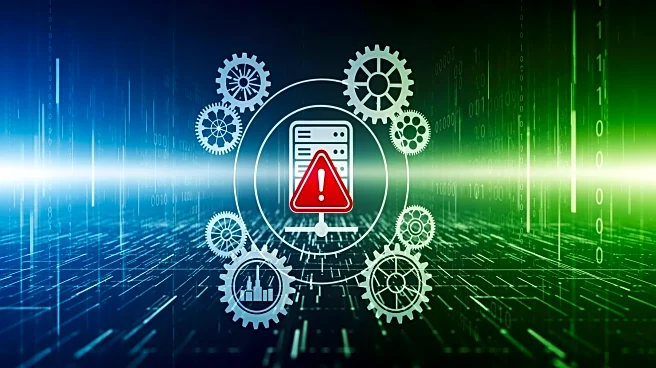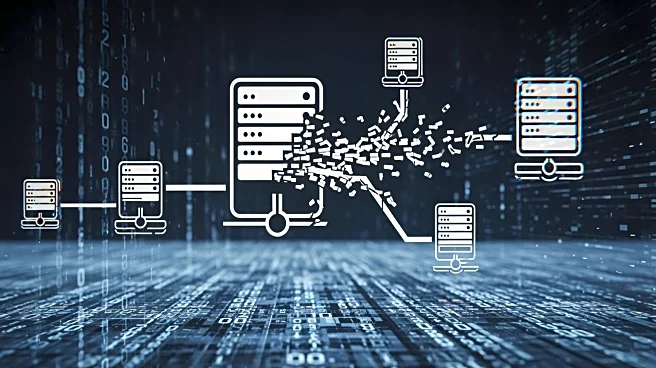What's Happening?
A major outage at Amazon Web Services' (AWS) northern Virginia data center disrupted services for millions of users globally. The glitch affected 141 AWS services, including popular platforms like Snapchat,
Roblox, and Fortnite, as well as airlines and financial services. The outage lasted for over 15 hours, causing significant inconvenience and operational challenges for businesses and consumers reliant on AWS for cloud services. Amazon has promised a post-event summary to explain the cause of the outage, which was not attributed to external hacking but rather internal system failures.
Why It's Important?
The AWS outage underscores the vulnerabilities associated with heavy reliance on major tech companies for cloud services. As AWS is one of the top three cloud platforms, its failure highlights the risks of centralizing data management and transmission in a few large entities. This incident raises questions about the adequacy of contingency plans and the robustness of infrastructure managed by big tech firms. Businesses and consumers affected by the outage may reconsider their dependency on single cloud providers and explore diversified solutions to mitigate future risks.
What's Next?
Amazon is expected to conduct a thorough investigation into the outage and implement measures to prevent similar incidents. Businesses may reassess their cloud strategies, potentially adopting multi-cloud approaches to enhance resilience. Regulatory scrutiny on cloud service providers could increase, prompting discussions on industry standards for reliability and disaster recovery. Stakeholders will likely demand greater transparency and accountability from tech companies regarding their infrastructure management practices.
Beyond the Headlines
The outage may lead to broader discussions on the ethical responsibilities of tech giants in managing critical infrastructure. It could also influence cultural perceptions of technology dependence and drive innovation in decentralized and resilient cloud solutions. Long-term shifts in industry practices may emerge, focusing on enhancing system reliability and user trust.











